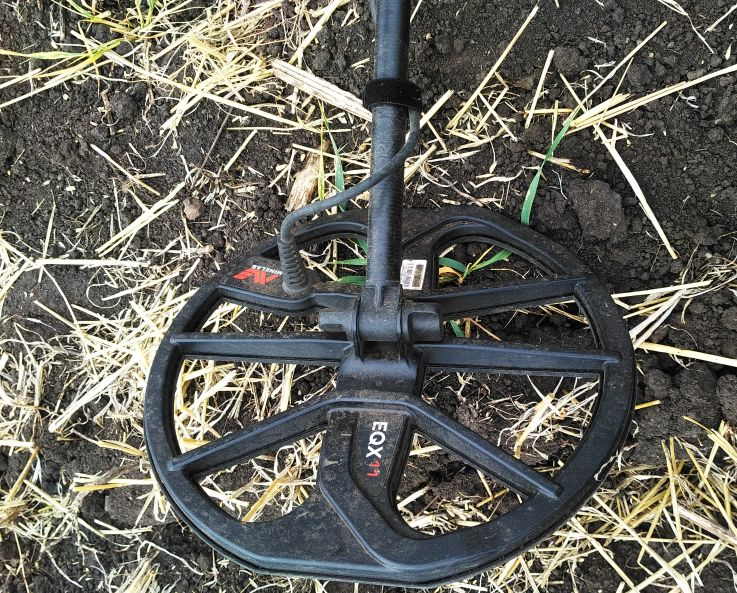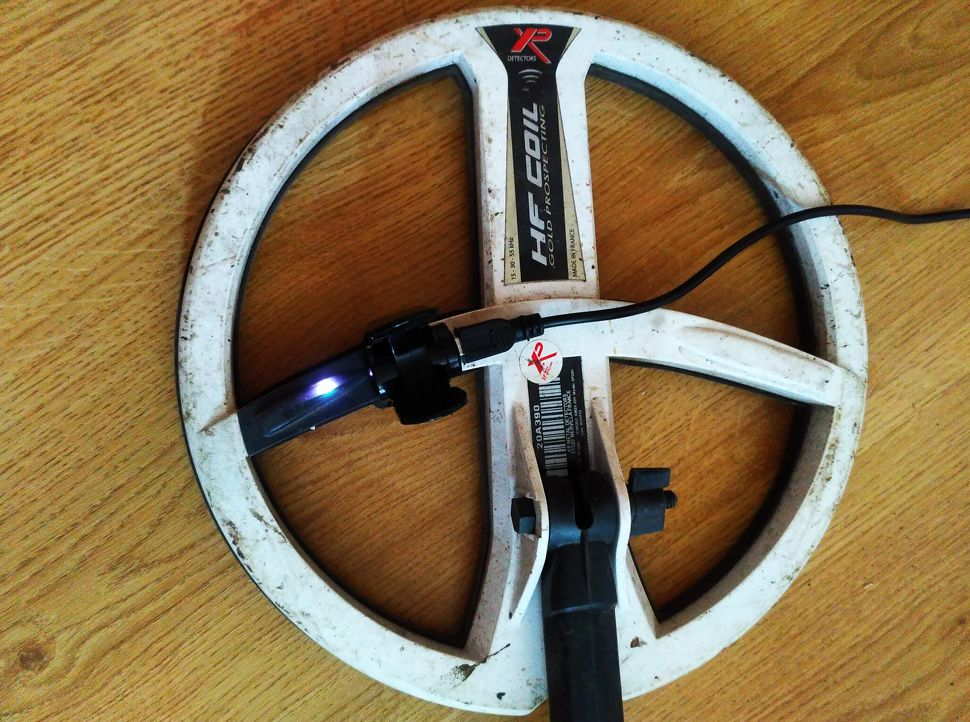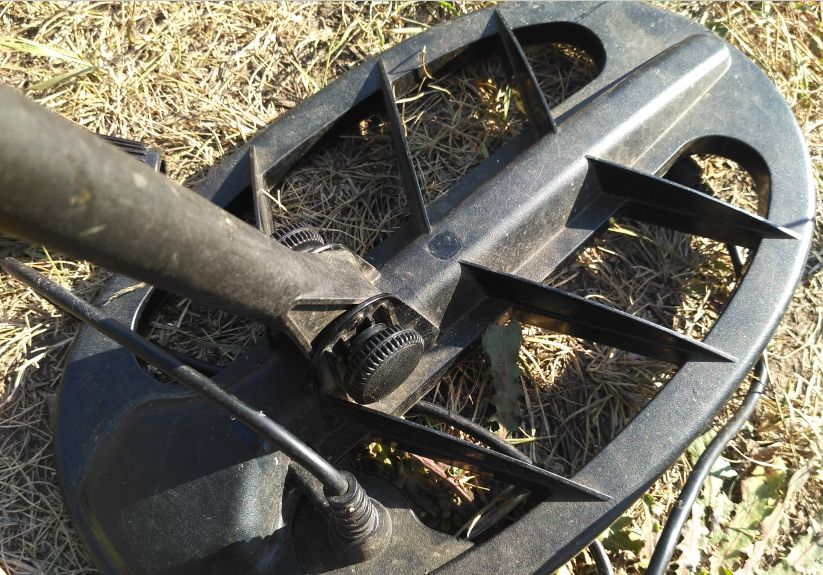A metal detector’s coil is as crucial as the right tires for your car or the appropriate shoes for various activities. Just like how winter tires help you navigate snow and summer tires improve driving in warm weather, choosing the right coil for your metal detector ensures optimal performance in different environments. Whether you’re searching on the beach, in a field, or through a dense forest, using the appropriate coil makes a noticeable difference.

Contents
Metal detector coil types
Metal detector coils play a crucial role in determining the detector’s sensitivity, depth penetration, and target discrimination. Choosing the right coil for your specific needs can greatly enhance your metal detecting experience. Here’s a breakdown of key coil types, sizes, and their respective uses:
Coil Types
- Double-D (DD) Coils: These coils have overlapping windings that create a dual-D shape. They perform well in mineralized soils, offering superior ground balance and sensitivity in difficult terrain.
Additionally, pulse induction (PI) coils are a great alternative for highly mineralized soils, as they are less affected by the ground’s composition and are particularly well-suited for saltwater beaches or environments with heavy mineralization.
Coil Sizes
- Small Coils (6-8 inches): Small coils are designed for finding small targets and are particularly useful in areas with high levels of metal debris. However, they may have limited depth penetration.
- Medium Coils (8-11 inches): These provide a balanced performance, combining good sensitivity and depth, making them versatile for most detecting environments.
- Large Coils (12 inches and above): Large coils penetrate deeper into the ground but may miss smaller targets. They are best suited for finding larger, deeply buried objects.
Frequency
- High Frequency (18 kHz and above): Ideal for detecting small, low-conductive targets like gold and fine jewelry.
- Medium Frequency (8-18 kHz): A great all-rounder, medium frequency works well for a variety of targets and is excellent for general-purpose detecting.
- Low Frequency (below 8 kHz): Best for finding large, highly conductive targets, low frequency also provides greater depth penetration.
For added versatility, some advanced detectors come with multi-frequency coils, which can scan at different frequencies simultaneously. This improves both depth and target identification, allowing users to detect a wider range of materials in one go.
Coil Shape
- Round Coils: Round coils offer an even detection field, making them reliable for general-purpose detecting.
- Elliptical Coils: These coils provide more coverage in one direction, making them ideal for covering large, open areas quickly.
Waterproof Coils are another key feature to consider. These coils are essential when detecting near rivers, lakes, or beaches, as they prevent damage to the device while working in wet environments.
To make the most of your metal detector, you need to match the coil to the conditions you’ll be searching in. Factors like the amount of metal debris, the level of soil mineralization, and the size of your target all play a role in determining which coil to use. Just like you wouldn’t wear flip-flops in the snow, you wouldn’t use the same coil for every environment. Different conditions require different tools, and using the correct coil for each situation ensures that your metal detecting trip is both efficient and successful.
Condition 1. Amount of metal litter
The coil should be chosen based on the amount of metal debris in the area you’re detecting. If you’re receiving multiple signals with each pass of your metal detector, it’s likely time to switch to a smaller coil.
When two or more targets are located beneath the coil at the same time, the detector may struggle to accurately identify what’s there, leading to missed targets or misidentification. Smaller coils, typically between 6 and 9 inches, are ideal in such cases, as they allow for better target separation and improved accuracy in areas with high levels of metal litter.

Condition 2. Soil mineralization
Soil mineralization is the primary factor affecting the depth at which a metal detector can operate and plays a significant role in determining which coil to use. Since treasure hunting involves scanning the ground, the mineral content in the soil can interfere with the electromagnetic signal, reducing its ability to penetrate deeply.
River Beaches typically have low soil mineralization, making them easier to search. Standard coils can be used, and larger coils, like 15-inch ones, can also be effective. However, it’s important to note that large coils are less sensitive to small targets, so finding items like chains might be challenging.
Sea Beaches present a different challenge due to the high mineralization caused by salt in the wet sand. This makes beach hunting more difficult. For such conditions, smaller Double-D coils or elliptical-shaped coils are recommended, as they handle the mineralization better and can still offer decent depth and target separation.
Fields and Open Areas allow for the use of larger coils, ranging from 15 to 18 inches. These coils not only increase search depth but also improve coverage, enabling treasure hunters to scan larger areas more quickly. Larger coils are particularly useful when searching open spaces with lower mineralization, allowing for faster search speeds while still detecting deep targets.

Condition 3. The coil size and operation frequency
When coin hunting, coil size plays a crucial role in determining the effectiveness of your metal detector. If you’re detecting in a large, open field, it’s best to use the largest coil available to cover more ground efficiently. However, if you’re searching for small targets, such as jewelry on a beach, opting for a standard or smaller-sized coil is more appropriate.
Larger coils, while great for depth and coverage, tend to lose sensitivity when it comes to detecting smaller targets. This is why it’s essential to match the coil size to the specific task at hand. The bigger the coil diameter, the more challenging it becomes to pick up small objects.
However, avoid using large coils (e.g., 12×13 inches) paired with high frequencies like 18.75 kHz when searching for large targets. High frequencies attenuate quickly in the ground, limiting their depth penetration. Consequently, using a large coil with a high frequency will not yield the desired results for deep, large targets.
For small coins and beach hunting, a high-frequency coil (around 18.5 kHz) is the most effective. This frequency excels in detecting small targets compared to lower frequencies. In terms of coil size, a diameter of about 9 to 10 inches works best for such tasks, offering both sensitivity to smaller items and reasonable depth.
In general, the smaller the coil, the more sensitive it is to small targets. Larger coils, while useful for depth and coverage, sacrifice some of this sensitivity, making them less suitable for detecting small objects like coins or jewelry. Therefore, when searching for small items, it’s advisable to use smaller coils to maximize your chances of success.
Best coil for gold detecting
Coil Size:
Smaller coils (6-8 inches) are more sensitive to small gold nuggets and perform better in highly mineralized soils. Larger coils (12 inches or more) cover more ground and penetrate deeper but may be less sensitive to smaller gold particles.
Frequency:
Higher frequency coils (18 kHz and above) excel in detecting small gold nuggets but don’t penetrate as deeply. Lower frequency coils (5-10 kHz) offer better depth but may miss finer gold particles.
Coil Type:
Concentric coils are better for discriminating between different types of metal. They work well in mild ground conditions and can provide accurate target identification.
Double-D (DD) coils are preferred in highly mineralized soils due to their superior ground balance and stability, making them better suited for tough conditions.
Ground Conditions:
If you’re detecting in mineral-rich soils, it’s vital to use a coil that can handle ground balance effectively. DD coils are particularly efficient in these environments, as they are less affected by ground mineralization. Some metal detectors, like the Minelab GPZ 7000, use advanced ground balance technology, allowing them to operate efficiently in highly mineralized areas.
Nugget Size:
If the area you’re prospecting is known for smaller gold nuggets, a small or medium-sized coil (8-11 inches) would be a good choice for finding these targets. For larger gold at deeper levels, a larger coil may be more effective.
Coil Shape:
Elliptical coils offer an advantage when working in tight spaces, such as around rocks or between obstacles, making them great for difficult terrains. Round coils provide a more uniform detection field, making them suitable for broader, more general detecting tasks.
Ideal Coil for Beginners:
For beginners, a medium-sized coil (8-11 inches) is often ideal as it offers a balance between depth and sensitivity. Additionally, a metal detector with adjustable frequency is a great option. This flexibility allows users to fine-tune the detector for the specific soil conditions and search needs.
When starting out, medium frequencies (around 10 kHz) are recommended, as they strike a good balance between depth penetration and sensitivity to small gold finds. Remember, it’s essential to spend time practicing with your chosen detector and coil to fully understand its capabilities and limitations.

SUMMARY
Selecting the right coil for metal detecting is essential for maximizing your success, whether you’re searching for coins, jewelry, or treasure. The coil should be chosen depending on the amount of metal litter around. If, while going metal detecting, you hear several signals after waving with the metal detector once, it’s time to change the coil for a smaller one. When there are two or more targets under the coil, the detector can’t define exactly what is there, leading to misidentification and missed targets. In such cases, using smaller coils (6 to 9 inches) is advisable.
Coil Size
- Small Coils (6–9 inches): Best for searching in tight spaces such as buildings, basements, and garages, as well as in areas with a lot of metal clutter and highly mineralized soils. They excel at detecting small targets.
- Medium Coils (10–11 inches): These versatile coils are suitable for most search conditions, particularly in areas with low mineralization and less litter.
- Large Coils (15 inches and above): Ideal for searching large areas for treasures and coins buried deep in the ground. However, their larger size can impair discrimination capabilities, making it difficult to distinguish between closely located targets. They are ineffective in heavily littered areas.
Coil Shape
- Oval-Shaped Coils: Effective in mineralized soils and areas with stones, offering better noise resistance than round coils. If the soil is not mineralized, round coils are preferred due to their superior search depth.
Coil Frequency
- High Frequencies (18.75 kHz): Excellent for searching for small targets. If your focus is on large targets, lower frequencies (3–7.5 kHz) are more suitable. For beach hunting, opt for a device with higher frequencies (12–18.75 kHz).
Coil Replacement Considerations
Avoid thoughtlessly replacing your standard coil. For instance, while the E-Trac comes with an 11-inch standard coil, some beginners may be tempted to switch to an oval-shaped 12×8-inch coil or a 12-inch round one, believing it will enhance search depth. However, physical laws dictate that doubling the coil diameter yields only a 50% increase in search depth, translating to minimal gains in practical terms. Therefore, it’s wiser to invest in coils designed for specific search conditions rather than following commercial trends. For example, consider a small coil for littered sites or a larger 15-inch coil for broader searches.
Quality of Coils
When purchasing coils, it’s best to choose those made by your metal detector’s manufacturer or partner companies, such as CoilTek for Minelab detectors. This ensures you receive high-quality, compatible equipment.
Ground Conditions
Mineralization is a critical parameter that influences both search depth and coil selection. The soil inhibits electromagnetic signals from penetrating effectively. Smaller coil diameters are less affected by high soil mineralization. E-Trac and CTX 3030 detectors provide a mineralization level scale; if it’s below 1/3, use a smaller coil or an elliptical one, while a level above 2/3 allows for larger coils (15 inches) for deeper searches.